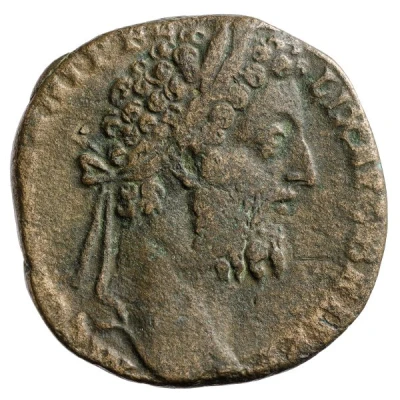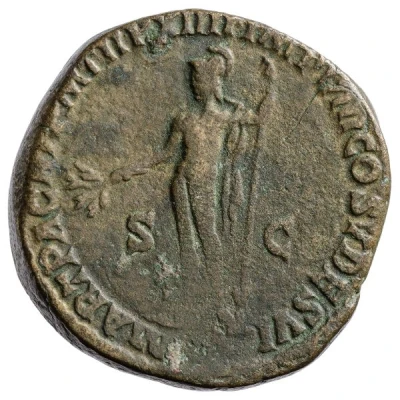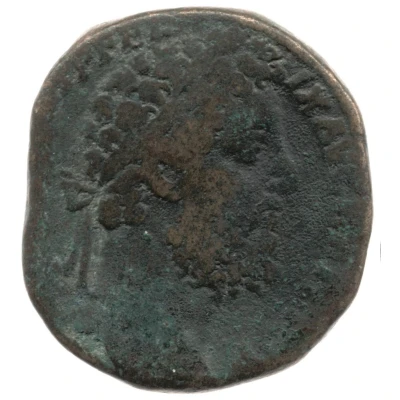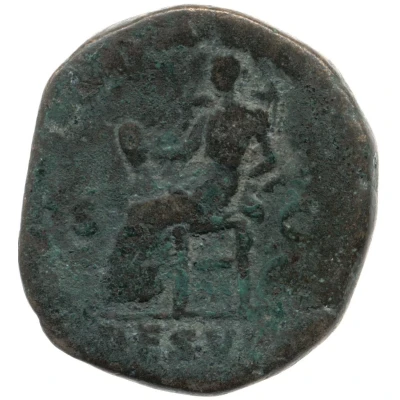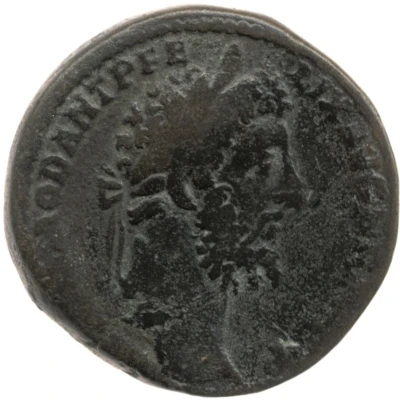
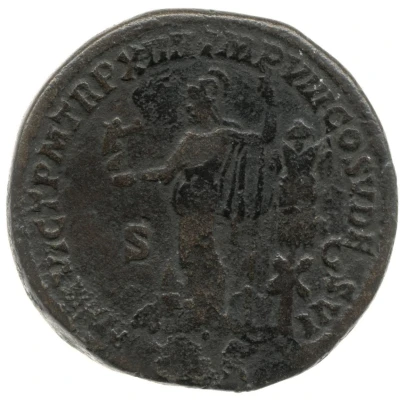

© Trustees of the British Museum
Sestertius - Commodus MINER VICT P M TR P XIIII IMP VIII COS V DES VI S C; Minerva and Victory
189 year| Bronze | 21.1 g | 28 mm |
| Issuer | Rome › Roman Empire (27 BC - 395 AD) |
|---|---|
| Emperor | Commodus (Lucius Aurelius Commodus) (177-192) |
| Type | Standard circulation coin |
| Year | 189 |
| Value | 1 Sestertius = ¼ Denarius |
| Currency | Denarius, Reform of Augustus (27 BC – AD 215) |
| Composition | Bronze |
| Weight | 21.1 g |
| Diameter | 28 mm |
| Shape | Round (irregular) |
| Technique | Hammered |
| Demonetized | Yes |
| Updated | 2024-10-06 |
| Numista | N#265931 |
|---|---|
| Rarity index | 95% |
Reverse
Minerva, helmeted, draped, standing left, holding Victory in extended right hand and spear in left hand; to left, shield; to right, trophy.
Script: Latin
Lettering: MINER VICT P M TR P XIIII IMP VIII COS V DES VI S C
Translation:
Minerva Victrix. Pontifex Maximus, Tribunicia Potestate Quarta Decima, Imperator, Octavum, Consul Quintum, Designatus Sextum. Senatus Consultum.
Minerva, the victorious. High priest, holder of tribunician power for the 14th time, supreme commander (Imperator) for the eighth time, consul for the fifth time, elect for the sixth time. Decree of the senate.
Comment
Mass varies: 17.08–24.63 g;Example of this type:
Trustees of the British Museum
Source:
Online Coins of the Roman Empire (OCRE)
Interesting fact
One interesting fact about this coin is that it features a rare combination of two goddesses on its reverse side - Minerva and Victory. This is unusual because Roman coins typically depicted a single deity or a personification of an abstract concept. The fact that Minerva and Victory are shown together on this coin may indicate that the Roman Empire was emphasizing the importance of military victory and the role of wisdom in achieving it during the reign of Commodus.
